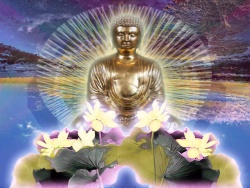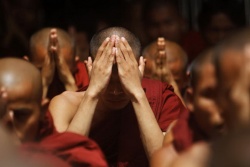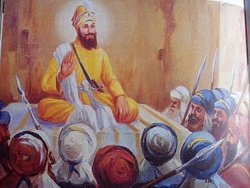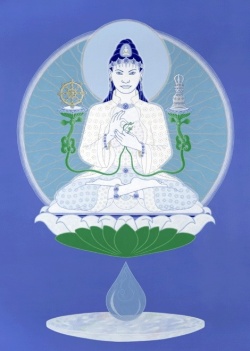Monastery Life
</nomobile>
There used to be thousands of monasteries in Tibet. Every family was expected to send at least one boy to a monastery.
Usually, boys would be ordained at the age of seven; girls, a bit older. The monastery life used to be the only access to education and improved social status.
People went to monasteries to get educated, to merit their family and to pursue religious fulfillment.
Although educational and economic conditions in Tibet have improved, many Tibetans are still drawn to the monasteries.
The monastery life is rigorous.
Monks are involved in all kinds of religious services and administrative tasks, on behalf of individual study and the monastery community.
Daily life starts in the early morning and ends in the late night.
The whole day is occupied with communal or individual religious services and the management of the monastery.
Older monks, learned lamas, hold greater responsibilities such as maintaining discipline and leading the group prayers.
Younger monks help by running the kitchen, shopping and serving food and tea.
Religious study and services are the main theme of the monastery life.
The newly ordained monks start from basic Tibetan language, grammar, literature, sutra chanting and prayers.
Then time will be spent on Buddhist canons such as Abhidharma (Higher Knowledge), Prajnya Paramita (The Perfection of Wisdom), Pramana (Logic), and Madhyamika (The Middle Way). Generally the study process will last for 18 years or more.
Monks study sutras and tantras and read Buddhist texts. Crafts, astrology and medicine are also the subjects they need to learn. In addition, Monks retreat for hours to reflect and meditate on teh meaning and implications of Buddhist philosophy.
Sutra debate is important to help master and deepen Buddhist theology.
These debates are also a method of examination: high lamas debate with the applicant monks. Those who pass the examinations held in their own monasteries will be qualified to participate the Monlam (The Great Prayer Festival) Debate.
A Geshe Lharampa Degree, which represents the highest degree in Tibetan Buddhism theology, will be conferred on those who win.
A Geshe Lharampa who wants to advance to a higher religious and scholarly fulfillment needs to attend one of the tantra colleges to get the Geshe Ngarampa Degree (Tantra Master).
Only a few talented monks can enter a scholarly religious life and advance to religious fulfillment.
Many others fall into more secular jobs such as craftsmen, builders, artists and cooks.
Nuns live a life similar to that of monks, in a more invisible manner.
Their religious practice mainly focuses on meditation and prayer rather than advanced philosophical studies in less structured nunneries, although there have been a few great female scholars in Tibetan history.



